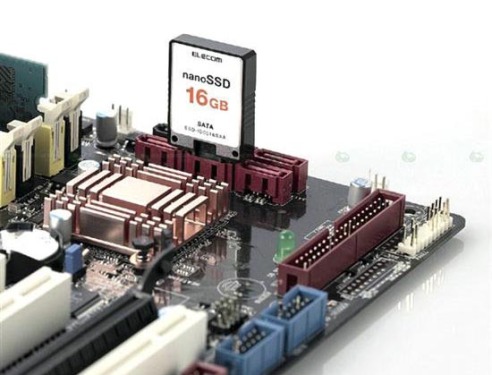 Solid-state hard disks have just begun to become popular. Many consumers have many common problems in their daily use, but they cannot find a professional to answer them. Today we are here to answer some common questions about the use of SSDs:
Solid-state hard disks have just begun to become popular. Many consumers have many common problems in their daily use, but they cannot find a professional to answer them. Today we are here to answer some common questions about the use of SSDs: Q: How does the external use environment affect SSDs?
Since no magnetic storage media is used, there is no danger of data being lost due to magnetization. Therefore, notebook manufacturers using SSDs can save a lot of hard disk shock protection accessories, further saving space and weight in the body. For desktop PCs, the use of SSDs does not need to worry about any use of the environment.
Someone asked whether the airport security scanner will affect SSDs. This is a very interesting issue. I cannot give an authoritative answer. However, you should know that SSDs have no difference in terms of physical characteristics from flash memory in U-disks, memory cards, and mobile phones. Therefore, you should not need to worry about X-rays.
Q: How to ensure the reliability of SSDs?
A: First, flash memory is a mature technology that has undergone long-term practical testing. Although flash memory particles have a certain read/write life, the current lifespan of the flash memory particles is much higher than the actual service life. For example, official data from Intel's solid-state drive SSD shows that it has a minimum useful life of 5 years regardless of frequency of use. If the application frequency is not high, it can be extended for another 5 years. In addition, Intel SSDs have built-in ATA SMART monitoring capabilities to check their health at any time. Users can rest assured that data security is absolutely the first consideration for SSD manufacturers.
Q: Why is there no 3.5-inch SSD?
A: The main reason is that "reasonable capacity" flash memory does not take up too much space from the physical specifications. It is more appropriate to make a 2.5-inch or 1.8-inch size. Here I say "reasonable capacity" means that it can provide enough storage space for practical applications and at the same time the price is reasonable. If you fill the flash memory with a 3.5-inch hard drive, the price will certainly be quite alarming.
Many people may have misunderstood this, thinking that the SSD does not have a 3.5-inch model because it only targets the notebook market. In fact, SSDs have never repelled desktop PCs. There is no difficulty in installing 2.5-inch SSDs in desktop 3.5-inch HDDs. Moreover, there is no difference between the 3.5-inch and 2.5-inch HDD SATA interfaces.
Q: Does SSD SSD need to defragment disk?
A: The answer to this question is more complicated. The data storage mode of SSDs is obviously different from that of traditional HDDs. For example, in order to prevent rapid aging due to frequent reading of a storage unit, SSDs often use a “loss-of-balance†mechanism to average the number of reading and writing of each block. The current operating system is not ready for this.
The main principle of the disk defragmenter is to place data that needs to be frequently read in places that can be accessed at high speed, and data that is rarely accessed is piled up in corners. The principle of SSDs determines that it can find any piece of data very quickly. Current defragmentation tools are powerless to optimize the SSD file system. Therefore, my recommendation is that SSD users should disable automatic disk defragmentation and do not manually defragment.
Of course, for the solid-state hard disk SSD, the storage distribution optimization problem also exists, but this problem is far less important than the traditional hard disk on the SSD. At present, all SSD manufacturers are solving this problem in the form of firmware optimization. In the future, there may also be "defragmentation" tools for SSDs, but it is necessary to first understand the specific working methods of SSDs from various vendors.
Q: Will SSDs be used more slowly?
A: This is a complicated issue. In the SSD life cycle, many factors will affect its performance. The most important of these is the data fragmentation problem. Unfortunately, there is currently no way to externally measure the impact of data fragmentation on SSDs. As mentioned above, the test program may be able to detect the difference in the performance of the internal storage of the SSD, but this will not significantly affect the user experience. The optimization of the SSD file system for SSDs will further address this issue in the future.
A backup camera (also called reversing camera) is a special type of video camera that is produced specifically for the purpose of being attached to the rear of a vehicle to aid in backing up, and to alleviate the rear blind spot. Backup cameras are alternatively known as reversing cameras or rear view cameras. It is specifically designed to avoid a backup collision. Backup cameras are usually connected to the vehicle rearview monitors.
Vehicle Backup Camera,Mirror Backup Camera,Vehicle Mirror Backup Camera,Vehicle Heavy Duty Camera
Shenzhen Sunveytech Co.,LTD , https://www.sunveytech.com